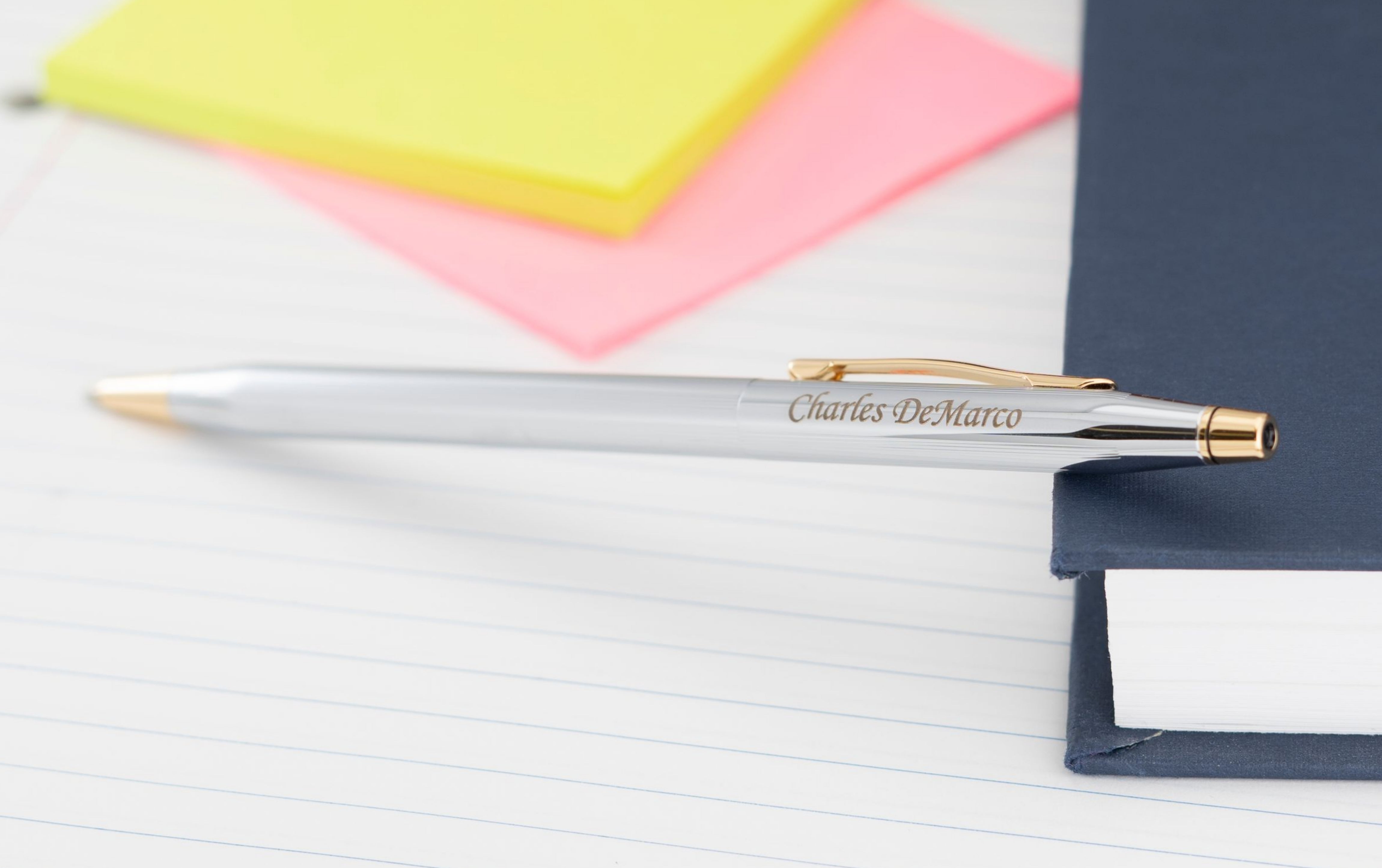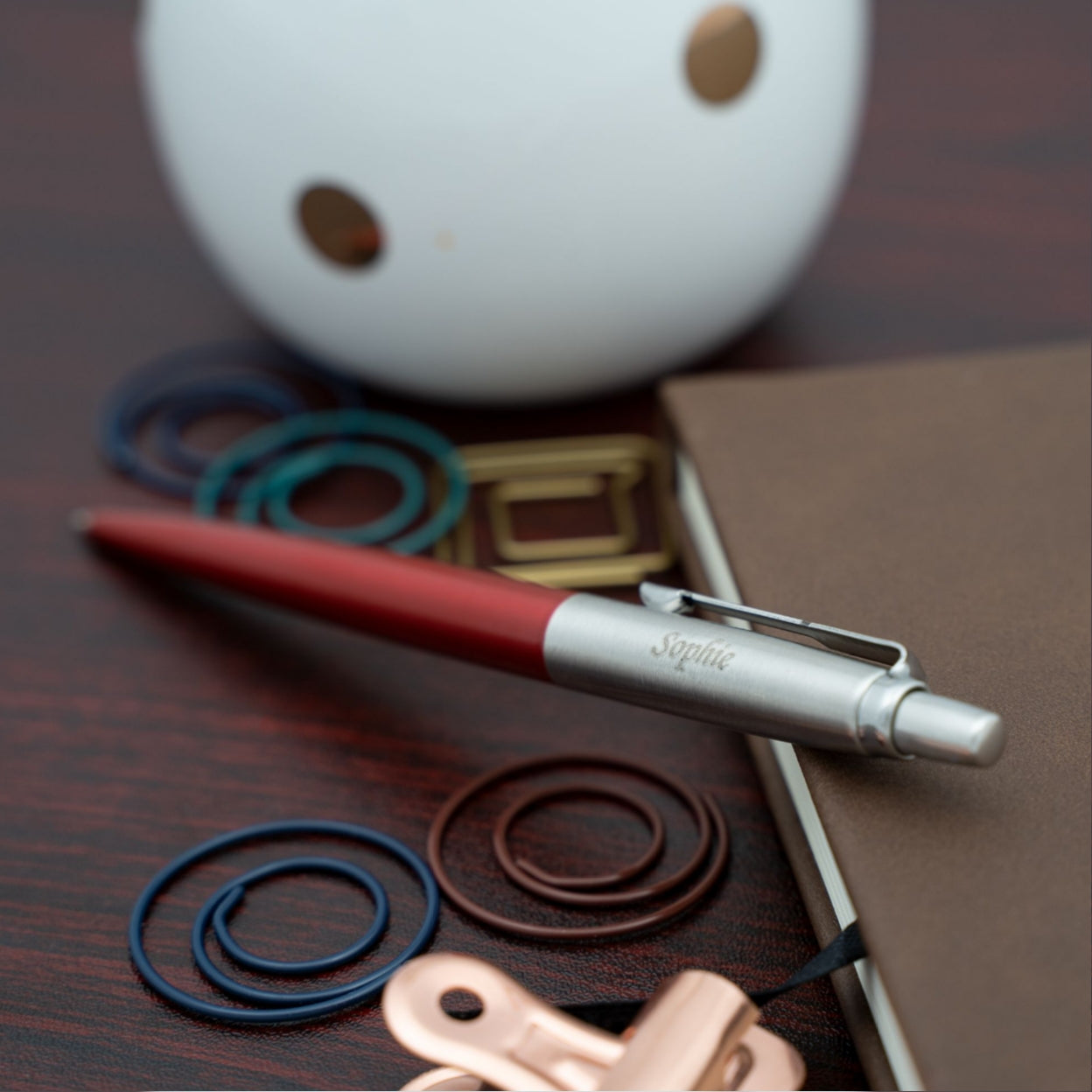How to Choose Your Perfect Pen for Your Handwriting Style

How to Choose Your Perfect Pen for Your Handwriting Style
But not to worry!
To find the perfect pen for you and your handwriting, we are going to look at how you write and exactly which writing style will be perfect for you.
Just because no two people on the planet that have identical handwriting, doesn't mean we can't find the similarities that will get you everything you need from a pen.
What Is Your Handwriting Style?
Let's consider a few examples of the techniques used to differentiate handwriting styles.
Forensics investigators sometimes use handwriting analysis to identify a person from written documents or signatures.
There are 12 characteristics used in forensic handwriting analysis that are quite interesting examples to observe in your own handwriting style:
- What is the thickness, strength, and flow of your letters?
- What is the amount of space you put between letters? Do you tend to connect or space them?
- Are the letters in proportion?
- Do you lift the nib or even your hand before writing a new letter, or do you connect them?
- Do you separate the capital letter from the lowercase letter, and are your words connected?
- Do your words begin or end with a curl, and on an upstroke or a downstroke?
- Do you add any extra loops or curls to your capital letter or lowercase letters?
- Do you apply pressure with your hand on the upstroke or the downstroke?
- Do your letters slant to the left, right, or is there no slant?
- Do you write on, below, or above the line?
- Are there swirls and loops in your handwriting?
- How do you cross your t’s and dot your j’s and i’s?
With so many characteristics to consider, it’s no wonder there’s a study called “graphology” dedicated to handwriting and analyzing its connection to psychology.
(Want to learn more about what your handwriting says about you? Check out this simple Handwriting Personality Test.)
Now that we have had a good look at what your own style is, let's talk about inks, penmanship styles, and the good ol' pen.
What's the Deal With Ink?
First up is ink.
Not all ink is made the same, and they all have different strengths and weakness.
There are three basic ink styles:
- Ballpoint — Uses oil-based ink that writes on anything and will never dry out
- Fountain — Harnesses liquid ink for a smooth, uninterrupted writing line
- Gel — Uses fast-drying gel ink as the perfect melding of the fountain pen and ballpoint ink styles.
Hand dominance, how closely you group your letters together, and how much pressure you apply when writing are all impacted by the type of ink used.
For instance, lefties will have better luck with oil-based ink that dries on contact to prevent smearing. And if you write with your letters close together, a gel ink will add definition to each line.
| Learn More: The Ultimate Guide to Pen Refills: How to Find the Right Ink for Your Pen |
What are the Different Styles of Handwriting?
There are three main types of handwriting styles:
- Cursive
- D’Nealian
Now, let’s see what makes different handwriting styles unique and how to choose a perfect pen accordingly.
Cursive Handwriting Style

Cursive handwriting, also known as the running hand, longhand, or script, is one of the more beautiful penmanship forms characterized by joined letters written in a fluid hand motion.
Writing in cursive is visually impressive and functional. It makes writing faster and more efficient by minimizing the lifts and separations of each letter and word. It requires some practice to learn as it’s more of an artistic handwriting style.
We differentiate Casual and Formal Cursive; the main difference being that the former encompasses a combination of joins and lifts while the latter is all conjoined.
If we dig through the history of this beautiful penmanship style a bit, we’ll find three more subclasses of cursive writing:
- Looped Cursive Handwriting — Best recognized by loops that some ascenders and descenders have. The loops provide a way to join letters together with more ease. This style is the one we most commonly associate with Cursive in general.
- Italic Cursive — Uses non-looped joins and discourages joins from letters such as g, j, q, or y. This style is not to be confused with the “italic typed” where letters slant forward, as Italic Cursive letters slant backward.
- Connected Cursive / Ligature — A predecessor of both types mentioned above. It was developed for practical advantages of speed to prevent fragile quills from breaking due to frequent lifting.
Fountain Pens: True Companions to Elegance
Cross Bailey Fountain Pen - Medalist
As you might have guessed, cursive handwriting and a fountain pen make the perfect match.
This iconic writing instrument (a modern-day quill) is a must-have for any writing enthusiast and penmanship aficionado — especially if you wish to write or improve your cursive.
Cursive may well be a “dying art”, but using a fountain pen could be the exact thing you need to be that “analog guy (or a gal) in the digital world,” as Hank Moody of Californication says.
Writing in cursive while using a proper tool is much more enjoyable than the usual simple act — it’s a perfect way to slow down and reconnect with yourself and your thoughts, and sign documents with class.
Get your Fountain Pen today.
| Related Topic: Handwriting Practice for Meditation |
Print Handwriting Style
On the opposite side of cursive, there is a simpler and more usual everyday handwriting style.
Known as block letters, ball & stick, print script, or manuscript — children learn print handwriting at the earliest age in most English speaking countries.
Sometimes the terms print or block letters are used to describe block capitals — both small and large capital letters that imitate the typeset of capital letters.
Print letters are disconnected and much easier to read, which is why this type of penmanship is perfect for, and is often a requirement of filling out official forms.
Ballpoint Pens: Trusty Everyday Heroes
Cross Classic Century Medalist Ballpoint Pen
Ballpoint pens are the epitome of reliability and function to be used for a lifetime. There is a reason for them being so popular, as we use them for everyday writing purposes.
Being reliable and consistent, they are probably the safest bet as a beautiful and thoughtful gift — especially if you’re not sure which pen style the person you wish to gift it to uses.
Get one at Dayspring Pens.
D’Nealian Handwriting Style
 Image from: wikimedia
Image from: wikimedia
The final style of handwriting is a “best of both worlds” sort of a thing — D’Nealian penmanship.
This handwriting style incorporates both print and cursive handwriting, and has emerged out of practical need. The early 20th century — with its technical revolutions — affected the growth of bureaucratic paperwork. And cursive fell short, trying to keep up.
To add to that, cursive handwriting is more difficult for children to learn due to the finger movements necessary that often left their hands cramped.
In answer, a change happened to the cursive style — it was originally Austin Palmer, a handwriting analyst, that thought of eliminating all the loops and unnecessary flourishes.
There have been many instances of this “new and simpler cursive” style, but D’Nealian became the most popular thanks to Donald Thurber who came up with it to help children learn more easily when going from print to cursive.
Rollerball Pens: Skillful and Versatile Flair

Cross Century II Medalist Selectip Rollerball Pen
What better way to compliment a combination of cursive and print than with a writing instrument that itself is a medium between ballpoints and fountain pens?
Rollerball pens use water-based ink, but have mechanics that are similar to a ballpoint pen.
This means they are great at creating clear lines for the constant pick up and put down of print or creating a smooth line for the connections of cursive.
| Further Reading: What Is a Rollerball Pen? |
Gel Pens: Sign Anything with Panache
And if you like bold coloring in your handwriting, then you can’t go wrong with a fine Gel pen.
The ink takes a little longer to dry, but it won’t bleed through the page when you sign important documents. It enables you to keep that smooth writing feel while not worrying about refilling the ink.
Shop Today, So You Can Sign in Style Tomorrow
If you’ve read this far, then you are probably a true writing enthusiast and know what a difference a good writing tool makes.
We hope this article has helped you determine the perfect pen that will make your handwriting pop. If you're looking for the best engraved pen gift, head over here to learn more.
With daily practice, you can learn any style of handwriting and make it your own.
|
|
Daniel Whitehouse is the President and CEO of Dayspring Pens. He uses his expertise with premium writing utensils to create exceptional, intentional products and craft easy-to-understand articles that help both new and experienced users learn more about their writing tools. He lives in Virginia where he and his wife are raising their four children. To learn more about him and his insights about custom engraved gift pens, follow Daniel on LinkedIn. |






